Bird Photographer of the Year 2022 winners announced
posted Friday, September 9, 2022 at 1:00 PM EDT

The Bird Photographer of the Year 2022 winners have been unveiled. Norwegian photographer Erlend Haarberg won this year's grand prize for his stunning image of a rock ptarmigan in its winter plumage taking flight above snowy mountains in Tysfjord, Norway.
"High up in the mountains, the wind, snow and cold maintain the iron grip of winter for many months on end. This is where rock ptarmigan thrive in an endless white landscape," said Haarberg. "On this particular winter's day, I was on my way to a mountain top. I had almost reached the summit when I spotted some ptarmigan tracks in the snow. Soon a bird took flight, with the dramatic backdrop showing what a harsh environment this bird calls home."
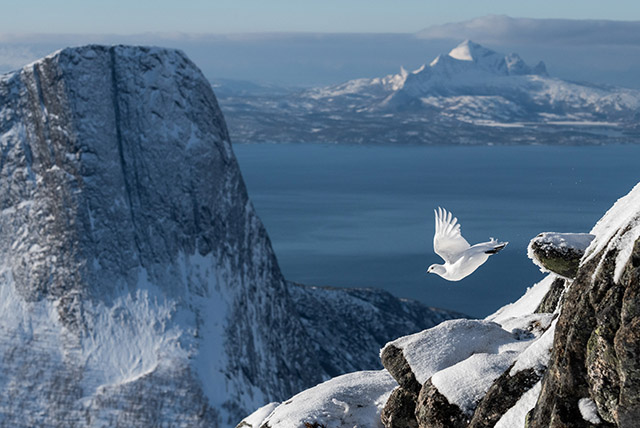
Category: Overall Winner and Birds in the Environment. Gold Award Winner and Bird Photographer of the Year.
"High above the tree-line, the wind, snow and cold maintain the iron grip of winter for months on end. This is where Rock Ptarmigan thrive, small white feather-balls in an endless white landscape. On this particular winter day, I was on my way to a mountain top by Tysfjorden to photograph landscapes. I had almost reached the summit when I spotted some ptarmigan tracks criss-crossing between the rocks, where the wind had uncovered some sparse vegetation. From behind a rock, a small head appeared, and seconds later it took to the wing with the mountains and fjord landscape in the background, setting the scene perfectly."
Shot with a Nikon D850 with Nikon 70-200mm F2.8 lens at 95mm, F10, 1/2500s, ISO 800.
17-year-old Swiss photographer Levi Fitze won the Young Bird Photographer of the Year 2022 title for his image of a dunlin struggling against a sandstorm.
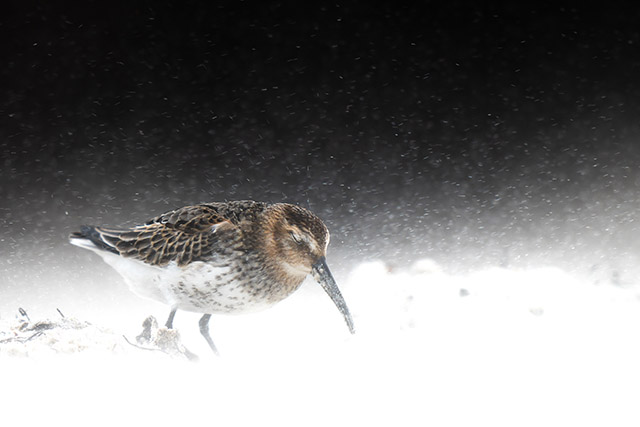
Category: 14-17 years. Gold Award Winner and Young Bird Photographer of the Year.
"Last autumn I spent a week on the tiny North Sea island of Heligoland. The weather was quite bad and I didn’t see a single nice sunrise. However, the opportunity to observe all kind of shorebirds made up for the conditions. When I saw a group of Dunlin struggling with a small sandstorm, I decided to risk my equipment and attempt to photograph them. I could really see on their faces how annoyed they were by the wind and sand flying everywhere. I sympathised with them."
Shot with a Sony A7R IV with Sony 400mm F2.8 GM lens at F2.8, 1/1250s, ISO 125.
"Once again our talented photographers have cast a light on the incredible diversity of bird life that we share our planet with," says Will Nicholls, Director of Bird Photographer of the Year. "But it is also a stark reminder of what we stand to lose if we don’t continue to look after the natural world and fight for its protection from the many threats that exist today."
Conservation is at the heart of the Bird Photographer of the Year competition. This year's contest donated more than £5,000 to its partner charity, Birds on the Brink. The organization provides vital funding to grassroots bird conservation projects around the world.
Entrants competed across eight categories in the adult competition: Best Portrait, Birds in the Environment, Attention to Detail, Bird Behavior, Birds in Flight, Black and White, Urban Birds, and Creative Imagery. There was also a Conservation Award, Portfolio Award and Video Award. All the awarded images are featured in a hardcover book published by William Collins. The 256-page book is available to order now for £25.00, which is just under $30. The book features more than 200 beautiful photos from this year's competition.
You can see some of the awarded images below, but to see the full group of winners, head to the Bird Photographer of the Year website. If you'd like to enter the 2023 contest, it's now open for entries.
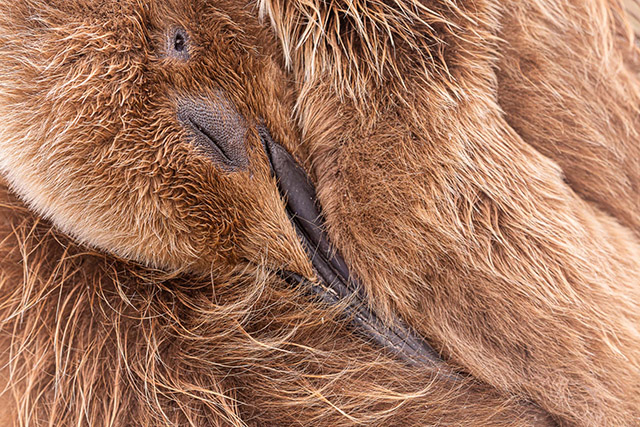
Category: Attention to Detail. Gold Award Winner.
"While most images of King Penguins seem to be of striking adult birds, there is a definite cuteness to the chicks in their brown ‘teddy bear’ plumage. This chick was asleep at Volunteer Point in the Falkland Islands, and I took the opportunity to capture the details around the beak, eye and ear, the latter seldom seen."
Shot with a Canon EOS 5D Mark IV with Canon 100-400mm F4.5-5.6 II lens at 300mm, F8, 1/160s, ISO 500.
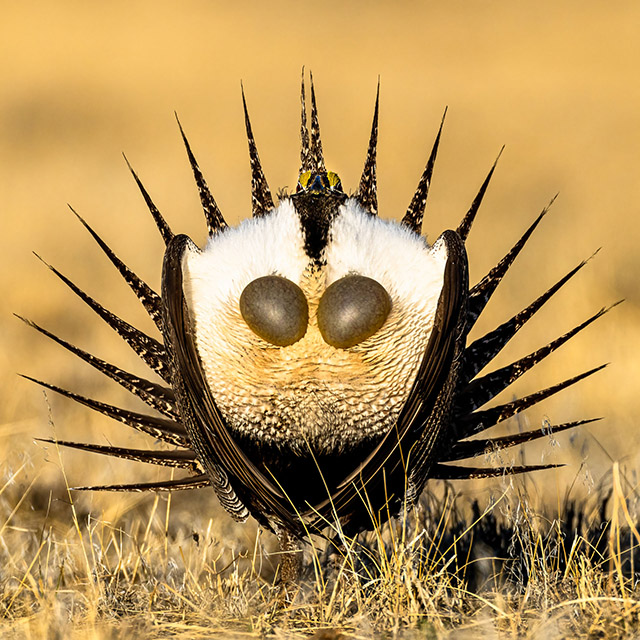
Category: Best Portrait. Gold Award Winner.
"You know that springtime has arrived on the prairies of the Great Basin of the American West when the Sage Grouse gather at their leks. On these traditional display grounds, males of this Near Threatened species perform their strutting displays in the hope of winning the right to mate. This behavior is for the benefit of the females, which judge the talent show and select the best genes to pass on to the next generation. I arrived at the lek more than an hour before the birds so I could set up my hide without causing disturbance. Similarly, with the best interests of the birds at heart, I packed up the hide only when the last bird had left the area. In previous years I had tried to capture this type of portrait shot but had been unsuccessful. However, on this particular morning my luck changed when this bird wandered close to my hide in full display. The photograph was taken without using baiting, calls, lures or unethical practices of any kind."
Shot with a Sony A1 with Sony 600mm F4 GM lens and 1.4x teleconverter.
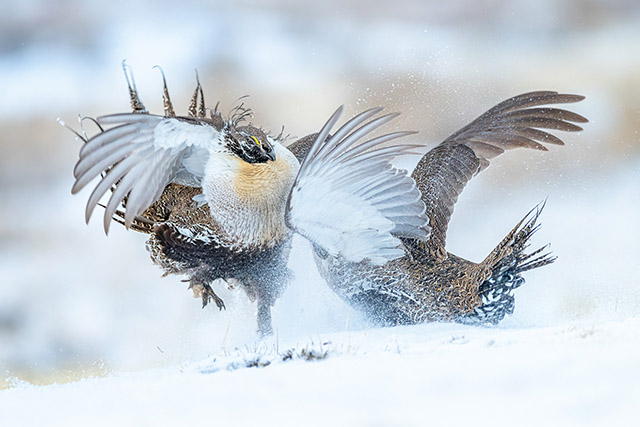
Category: Bird Behavior. Gold Award Winner.
"During the spring breeding season, male Sage Grouse gather on traditional lekking sites and often engage in short but violent fights. They have an elaborate display designed to attract and impress females and show their superiority; inevitably this leads to rivalry between males and challenges on the lek. I set up my ground hide a safe distance from the lek a couple of days before the photo shoot. I entered my hide in the middle of the night, trying to sleep as best I could before the early morning hours. At first light I awoke to booming sounds made by the male grouse, and the sight of their unusual display and this particular battle. No bait or calls were used."
Shot with a Nikon D850 with Sigma 500mm F4 lens at F4, 1/2500s, ISO 1250.
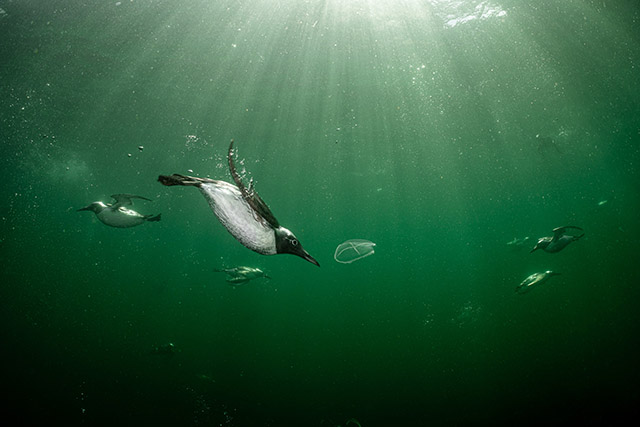
Category: Bird Behavior. Silver Award Winner.
"Common Guillemots (Common Murres) are incredible freedivers – so good, in fact, that studies have shown that of all flying birds, this humble species is the most efficient swimmer. It is bested in the water only by penguins, with which it shares similar stylistic traits. The difference, of course, is that penguins – perhaps descended from the same auk family as Common Guillemots – sacrificed their ability to fly as they adapted to an aquatic existence."
Shot with a Nikon D850 with Nikon 28-75mm F3.5-4.5 lens at 28mm, F13, 1/250s, ISO 200.
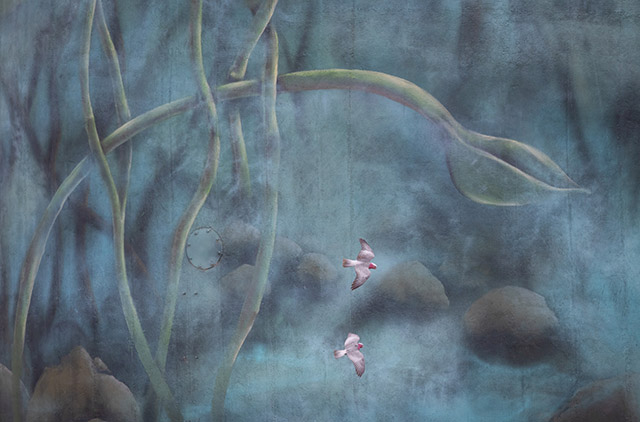
Category: Birds in Flight. Gold Award Winner.
"Large areas of Australia are flat, dry and given over to wheat farming. Towns can consist of as little as a truck stop and a collection of grain silos. In some locations, these silos have become popular palettes for enormous murals, drawing tourists into otherwise desolate areas. I passed through Yelarbon and stopped for two hours to photograph the Galahs that are attracted to spilt grain. The results were so pleasing and surreal that I made the seven-hour trip on a subsequent weekend to have another go, only to find that a mouse plague had moved in and the silos were being fumigated – no Galahs. (Mural: Brightsiders.)"
Shot with a Canon EOS R5 with Canon 300mm F2.8 lens at F3.5, 1/8000s, ISO 1600.
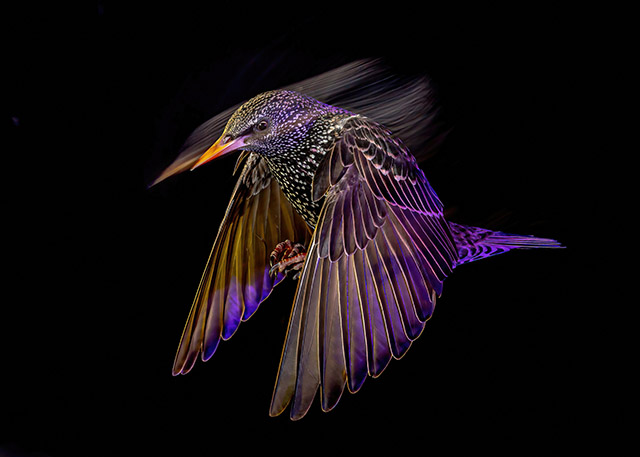
Category: Birds in Flight. Silver Award Winner.
"This image was taken using flash, with the camera in rear curtain synch mode. To attract the Common Starling, I placed some sunflower seeds in a feeder, and as the bird came towards the feeder, I timed the shot to capture its descent. Timing was critical, as was the need to balance the flash with the ambient light so you could see the trail of the starling while the flash ‘froze’ the bird in flight. The colored gels on the flash heads add to the image, giving it a feeling that the bird is lurking in the shadow of the night."
Shot with a Canon EOS 5D Mark III with Canon 100-400mm F4.5-5.6 lens and flash at 200mm, F16, 1/15s, ISO 200.
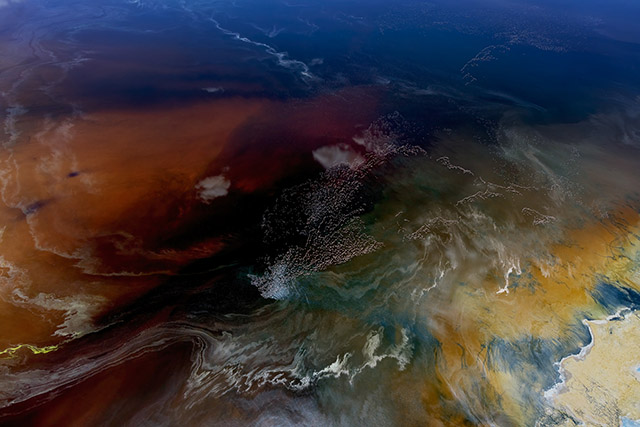
Category: Birds in the Environment. Silver Award Winner.
"This image shows a small flock of Lesser and Greater flamingos as they fly over Lake Logipi in northern Kenya. Recent rains had covered the previously empty lake with a shallow depth of water. This had awakened dormant microscopic algae in the lake bed, which caused the red coloration in the image and mixed with yellow and brown sediment washed into the lake from the Suguta River. High rates of evaporation resulting from searing air temperatures had begun to produce soda salt floes on the lake surface. Huge numbers of flamingos regularly gather on this remote lake to feed on the specialist brine invertebrates here, which themselves feed on the algae. I took this image from a light aircraft with the doors removed on one side."
Shot with a Canon EOS 5D Mark IV with Canon 100-400mm F4.5-5.6 II lens at 164mm, F8, 1/4000s, ISO 1250.
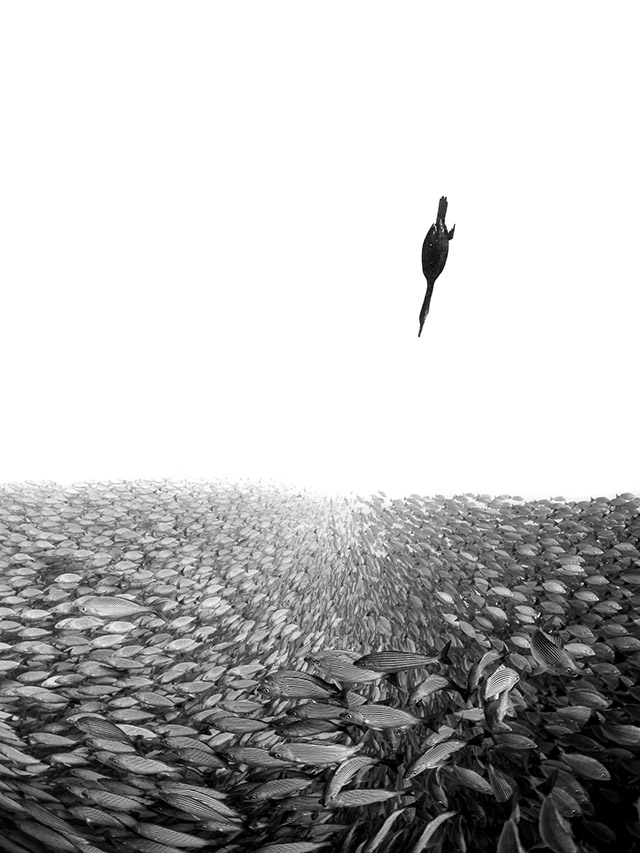
Category: Black and White. Gold Award Winner.
"Ten meters down, I found myself hovering between two worlds. Below, an enormous school of fish covered the bottom as far as I could see. Above, a single Double-crested Cormorant patrolled the surface, catching its breath and peering down at a potential underwater feast. The cormorant, better designed for swimming than flying, would dive down at speed, aggressively pursuing the fish. The school would move in unison to escape the bird’s sharp beak, making it difficult to isolate a single target. More often than not, the bird returned to the surface empty-billed, and peace would momentarily be restored. I would squint up at the sunny surface, trying to keep track of the predator and anticipate its next underwater raid. This image captures the hostile black silhouette of the cormorant as it dives down onto its prey, which for a brief moment remain unaware of the danger above."
Shot with a Nikon D850 with Nikon 28-70mm F3.5-4.5 lens at 28mm, F8, 1/500s, ISO 500.
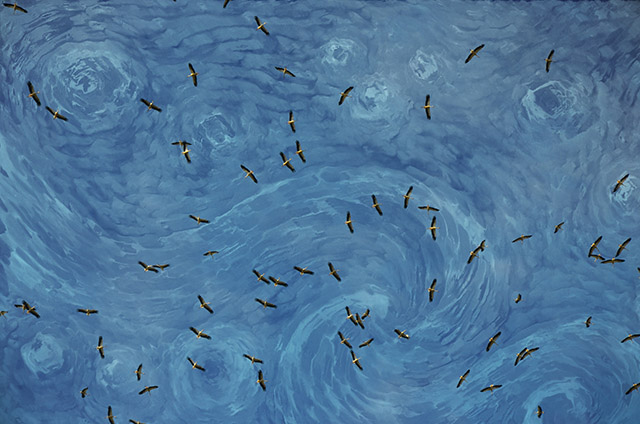
Category: Creative Imagery. Gold Award Winner.
"In Ukrainian mythology White Storks symbolise faithfulness and strength of spirit. It is hard to imagine a Ukrainian village without a stork’s nest. Everywhere, from Polesia to Slobozhanshchyna, White Storks are seen as a symbol of love for their motherland. When spring arrives and storks return home, Ukrainians young and old go out into the streets, greet the birds’ arrival and sing traditional songs called Vesnyanki in celebration. Ukrainians cherish spring, which brings prosperity and hope, and we feel that happiness will undoubtedly bless any house where a stork settles and decides to nest. Storks also set a good example and serve to remind Ukrainians how important it is to love our homeland. They fly thousands of kilometers to warmer lands when there is a bitter winter. But they always come back, overcoming all the hardships that beset them on their journey. We believe that love for their native land gives the storks the strength to survive and return home. Ukrainians don’t traditionally give birds and animals human names. However, an exception is made with White Storks, which are addressed as if they were people. My fellow Ukrainians are facing a similarly challenging task right now – once again they must defend their native nests, while some are forced to rush like storks in the direction of the sun. Many of us will fall, but I hope that spring is ahead of us. I believe that most of us will live to see the return of White Storks circling overhead in the peaceful skies of a free Ukraine. Then we will all rally together, and sing Vesnyanki once more."
Shot with a Nikon D5100 with Nikon 18-105mm F3.5-5.6 lens at 105mm, F9, 1/320s, ISO 100.

Category: Urban Birds. Gold Award Winner.
"This image was taken from the rooftop of one of the towering skyscraper buildings that dominate the skyline of Abu Dhabi. It shows a line of Greater Flamingos flying on a morning when fog covered the city and the only signs of the urban landscape were the tops of the buildings emerging from the blanket of mist. At the time it seemed a bit like a fantasy, a fleeting moment made surreal as the birds unexpectedly flew past. Fortunately, I was prepared for action and my zoom lens allowed me to frame the birds and capture the moment."
Shot with a Nikon Z6 II with Nikon 70-200mm F2.8 lens at 71mm, F7.1, 1/500s, ISO 100.

Category: 14-17 years. Silver Award Winner.
"This photograph was taken in an area I have known for a long time – it is a soda lake called Nagyszéksós-tó, near the town of Mórahalom. Kinskunság National Park introduced Water Buffalos (Bubalus bubalis) at least ten years ago, and the beneficial outcome has been that the birdlife has become very rich and diverse. Until now, I have photographed only adult birds at this location, but I managed to observe and photograph Pied Avocet chicks in early summer. After prolonged observation, I edged my way closer to the birds. The parent birds soon overcame any nervousness and soon got used to my presence; I was an insignificant addition to the nearby Water Buffalos, which dwarfed me. The chicks went about their business a few meters away from me, and fed and preened quite happily. I was lucky enough to be able to photograph this chick backlit, and as a result I took some really special images."
Shot with a Canon EOS-1D X with Canon 400mm F4 III lens and 1.4x teleconverter at F5.6, 1/3200s, ISO 100.
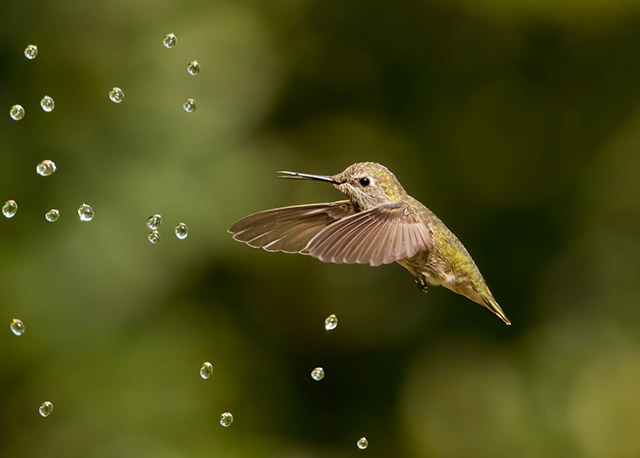
Category: 9-13 years. Gold Award Winner.
"In Fremont there is a water fountain that is a hotspot for hummingbirds. The birds like to bathe in the water, or in this case catch and sip the droplets. When the birds fly around among the droplets, it provides great opportunities for photography. I had to use a very fast shutter speed to freeze the water droplets and the wings of this Anna’s Hummingbird."
Shot with a Nikon D3500 with Sigma 150-600mm F5-6.3 lens at 600mm, F6.3, 1/4000s, ISO 2800.

Category: 8 and under. Gold Award Winner.
"One of my parents’ friends, who lives nearby, took us on a hike to a location where she had seen Barred Owl chicks earlier in the week. Amazingly, we were just a few minutes into the hike when we heard them calling. Eventually we got to see four owlets, which was amazing. One landed close by and peered at me from behind a tree trunk in a way that seemed to express curiosity. I was thrilled to be able to capture the moment and pleased that the judges appreciated the photo."
Shot with a Canon EOS 700D with Canon 55-250mm F4-5.6 lens at 250mm, F7.1, 1/30s, ISO 1600.